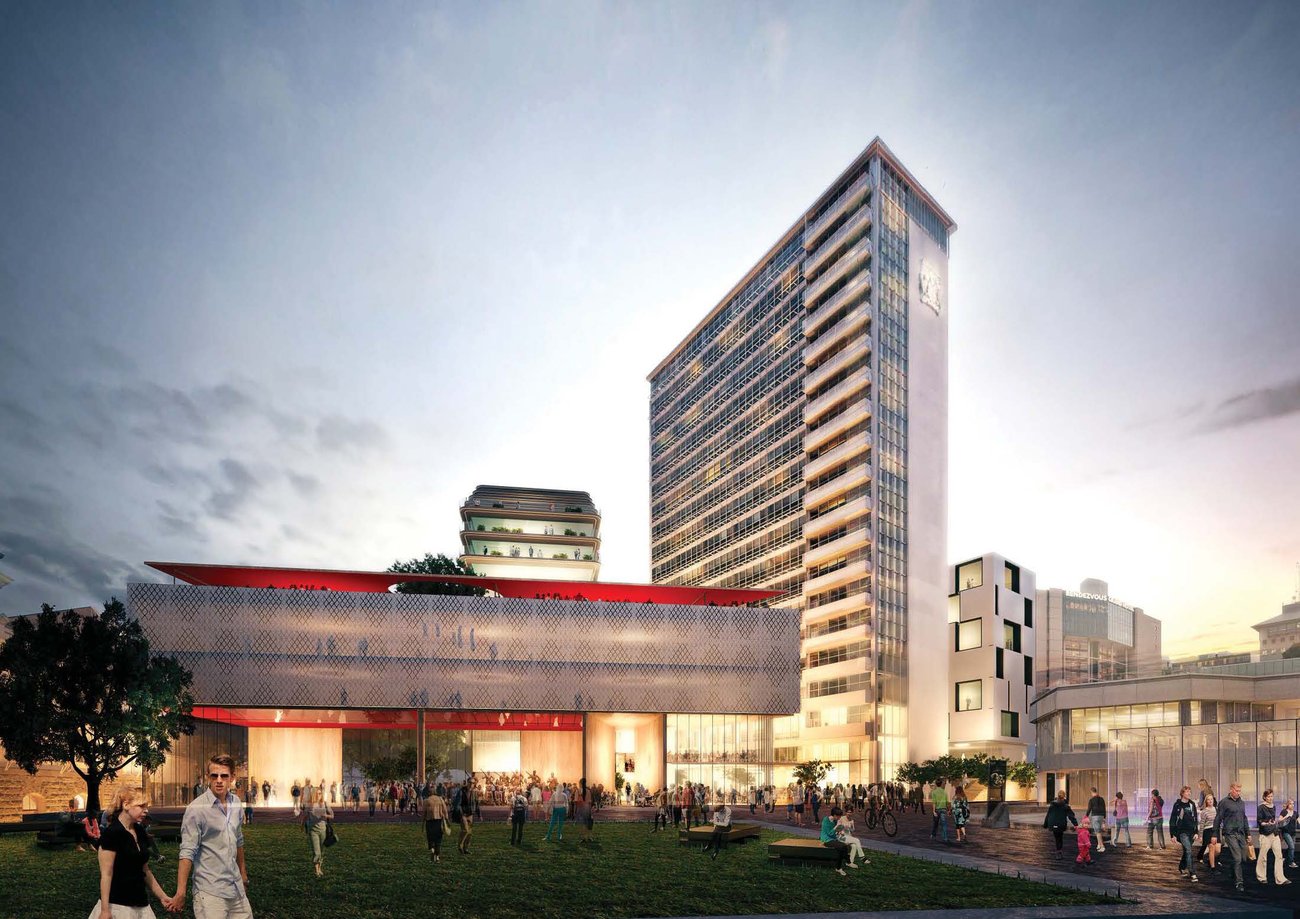Multi-use design at forefront in Aotea Square redevelopment set to reshape Auckland

Any visitor, recent transplant, or long-time local can likely attest to the semi-open hunk of concrete smack in the centre of Auckland’s CBD. But as pretty as that hunk of concrete is – what with its trees, interesting surrounding architecture and all – quite a few people have noticed the large, Soviet brutalist-esque (technically, though, it’s modernist) building right next to it, which hasn’t been used since 2014.
Now the Civic Administration Building in Aotea Square will be restored and the surrounding area developed under a new plan. Urban development agency Panuku Development Auckland has chosen Tawera Group to restore the heritage building after an international tender process. What Tawera’s Civic Quarter proposal features are residential apartments in the upper floors with food and beverage facilities on the ground floor of the existing building, similar to gentrified historic structures the world over in well-trafficked city centre places like Berlin’s Friedrichstrasse and Portland, Oregon’s Pearl District and Pioneer Courthouse Square.
As part of the redevelopment, there will be a new apartment building on the Mayoral Drive corner, a new boutique hotel on Mayoral Drive, and a building featuring a Whare Tapere performance space fronting Aotea Square. To get there, though, means there’s going to be something anyone who’s spent any amount of time in Auckland loathes: construction.

The plans for the new Civic Quarter in Auckland.
Yet Auckland Mayor Len Brown says the plan for what will be the “Civic Quarter” shows what is possible if we make the most of the opportunities we have with heritage buildings. “With the population in the central city expected to double in the next 30 years, it’s essential we develop new accommodation options to make this a liveable city,” he says. “This scheme is a fantastic way to achieve this. It’s all about making the most of the land and opportunities we have in a growing city.”
He also claims the development won’t cost taxpayers a cent. “For Aucklanders the best news is that this partnership with a well-respected private sector developer will come at no cost to ratepayers.”
Panuku project director Clive Fuhr says the project is an opportunity to breathe new life into the CBD. “It was important to provide a viable commercial opportunity that would enable the restoration of a heritage building, the provision of more housing and the revitalisation of this precinct.”
Fuhr says Tawera won the contract after proposals and submissions came in from architectural firms froma round the world. he Tawera proposal was selected with guidance from a panel of urban design experts and heritage advisors, he explains, as well as mana whenua who helped make sure Te Aranga Maori Design principles were incorporated into any plans. “It was important we found the right partner to ensure both the heritage features of the building are protected and that it tells a strong Maori story,” he says. “We were very impressed with Tawera, who recently won the Property Council award for their Hopetoun Residences. Their scheme certainly gives effect to the objectives in the recently adopted Aotea Quarter Framework Plan.”

The Civic Administration Building at present.
Unsurprisingly, Tawera’s John Love says his team is also excited to get to work. “Civic Quarter is the kind of regeneration project that has won Tawera Group awards in the past,” he explains. “It will blend an iconic Auckland landmark with cutting edge design ensuring that the Aotea Quarter becomes a must visit destination for all.”
Auckland Council heritage manager Noel Reardon, whose team was involved choosing who would head up construction, says the Civic was Auckland’s tallest building, at 71 metres, when it opened in 1966. “It’s great news to see such an iconic building being restored. The council’s heritage team will work closely with the developers to ensure the heritage features are retained and restored.”
The next stage in the development will be the obtaining of resource and building consents for construction and refurbishment of the building. Once those are obtained, it is hoped construction could begin by mid-2017, and finish by 2020.
So, Auckland: prepare for at least three years of construction smack in the city centre. But the pains are a small price to pay for lasting, inclusive design – or so say the people who want it to be that way.




